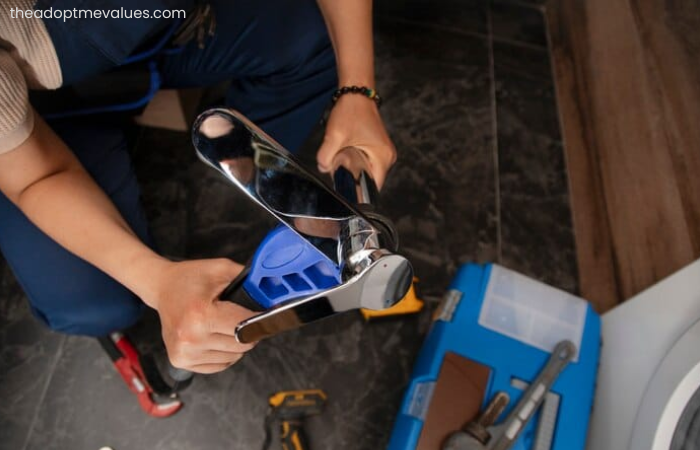
Thetechnotrick: Gaskets are essential components in sealing systems across various industries, ensuring tight, leak-proof connections. From refrigeration and automotive to industrial settings, proper gasket installation is key to maintaining optimal functionality. Even small errors during installation can lead to energy inefficiency, equipment breakdowns, or costly repairs.
Understanding common installation mistakes and learning how to avoid them can help improve equipment longevity and performance. Whether replacing a refrigerator gasket or sealing a commercial system, precision is crucial for a successful installation.
Related:-
How to improve your website rankings in 2025
Unforgettable Audio Experience – GET Your Redmi Buds 6 Pro Now!
Rent Gaming Laptop with Guaranteed Best Rates and Flexible Rental Options
Why Proper Gasket Installation Matters
A gasket’s job is to create a secure seal that prevents air, moisture, or contaminants from escaping or entering. If installed incorrectly, several problems may occur:
- Leaks and Air Gaps: An ill-fitting gasket lets cold air escape, increasing energy consumption.
- Premature Wear and Tear: Misaligned gaskets degrade faster, leading to frequent replacements.
- Reduced Efficiency: Equipment working harder due to sealing failures shortens its lifespan.
Avoiding installation errors guarantees an efficient seal, optimal performance, and long-term cost savings.
Common Gasket Installation Mistakes
Even experienced technicians may encounter issues during gasket installation. Being aware of common mistakes can help avoid unnecessary setbacks.
1. Incorrect Sizing and Fit
Using the wrong size gasket is one of the most frequent mistakes. A gasket that’s too large or small won’t seal properly.
How to Avoid It:
- Measure the existing gasket or the space where it fits before replacing it.
- Always follow manufacturer specifications for the correct size and shape.
- For refrigeration gaskets, ensure compatibility with the specific model.
2. Not Cleaning the Installation Surface
Old gasket residue, dirt, and grease can prevent the new gasket from sealing correctly, leading to air leaks.
How to Avoid It:
- Thoroughly remove any old gasket material, adhesive, or residue.
- Clean the surface with mild detergent and warm water or an appropriate cleaner.
- Dry the area completely before applying the new gasket.
3. Overstretching the Gasket
Pulling or stretching the gasket to make it fit can damage the material, diminishing its sealing properties.
How to Avoid It:
- Press the gasket gently into place without forcing it.
- Align one section at a time, ensuring an even fit around the perimeter.
- For magnetic gaskets, let them settle naturally without excessive stretching.
4. Misalignment During Installation
Misaligning the gasket can result in gaps that prevent a proper seal, causing performance issues.
How to Avoid It:
- Install the gasket gradually, ensuring even placement as you go.
- Use guides or markings for a straight, consistent application.
- Tighten any clips or screws evenly to prevent shifting.
5. Skipping the Curing Process
Some gaskets need time to conform to their intended shape. Skipping this step can result in improper sealing.
How to Avoid It:
- Allow the gasket to settle for the recommended time before testing the seal.
- For refrigerator gaskets, leave the door closed for several hours to ensure the magnetic strip fully engages.
- If needed, use gentle heat (such as a warm cloth or low hairdryer setting) to help the gasket conform.
Best Practices for Successful Gasket Installation
Following the right techniques ensures a strong, long-lasting seal.
1. Choose the Right Material
Not all gaskets are made from the same materials. Selecting the right type based on the application is essential for durability and flexibility.
Common Gasket Materials:
- Rubber Gaskets: Flexible and wear-resistant, ideal for refrigeration and industrial applications.
- Silicone Gaskets: Heat-resistant, perfect for food-grade uses.
- Foam Gaskets: Lightweight, best for sealing light enclosures.
Metal-Reinforced Gaskets: Used in high-pressure or heavy-duty situations.
2. Inspect the Gasket Before Installation
Before installing a gasket, check for defects like cracks or tears, and ensure it’s flexible enough for a tight seal.
3. Apply Even Pressure
When installing, apply even pressure to prevent distortion. Uneven pressure can cause sections of the gasket to lift or compress unevenly.
4. Test the Seal After Installation
Testing ensures the gasket is working as it should.
Testing Methods:
- Dollar Bill Test: Place a dollar bill between the door and gasket, then close it. If the bill slides out easily, the seal may not be tight enough.
- Visual Inspection: Look for any visible gaps or misalignments.
- Temperature Monitoring: For refrigeration, monitor temperature consistency to ensure no cold air is escaping.
Reliable Gaskets USA offers high-quality solutions that guarantee proper sealing for efficient performance.
When to Replace a Gasket
Even with proper installation, gaskets have a finite lifespan and will need replacing eventually. Recognizing when to replace them helps maintain efficiency and avoid further issues.
Signs It’s Time for a New Gasket:
- Cracks or Tears: Physical damage weakens the seal.
- Flattening or Hardening: Over time, gaskets may lose flexibility, preventing a tight seal.
- Condensation or Ice Build-Up: Indicates air leakage, especially in refrigeration systems.
- Higher Energy Usage: A faulty gasket forces equipment to work harder, increasing energy consumption.
Replacing worn-out gaskets on time prevents costly repairs and ensures continued efficiency.
FAQs
Q1. Why is gasket installation so important?
A.Proper gasket installation is crucial to ensure an airtight and leak-proof seal. A well-installed gasket prevents air, moisture, and contaminants from entering or escaping, improving energy efficiency, equipment longevity, and overall performance.
Q2. What happens if a gasket is installed incorrectly?
A.Incorrect gasket installation can lead to issues such as air leaks, energy loss, premature wear, and equipment inefficiency. Misalignment or incorrect sizing can reduce the gasket’s sealing capabilities, causing components to overwork, increasing maintenance costs, and reducing the equipment’s lifespan.
Q3. How do I know if I have the right size gasket?
A.To ensure the right fit, measure the existing gasket or the space where the new gasket will fit. Always refer to the manufacturer’s specifications to confirm the correct size and shape. For specific applications, such as refrigerators, make sure the gasket is compatible with the exact make and model.
Q4. Do I need to clean the surface before installing a new gasket?
A.Yes! Cleaning the installation surface is essential for ensuring the gasket adheres properly. Any old gasket residue, grease, or dirt can prevent a tight seal, leading to leaks. Use a mild detergent and warm water or a suitable cleaning solution to clean the surface thoroughly before installation.
Q5. Can I stretch a gasket to fit?
A.No, overstretching a gasket can weaken its material, causing it to lose its shape and sealing ability. It’s important to gently press the gasket into place, ensuring an even fit around the perimeter without forcing it.
Final Thoughts:
Though small, gaskets play a crucial role in maintaining system efficiency. Proper installation boosts energy efficiency, extends equipment life, and avoids common performance issues.
By avoiding common mistakes like improper sizing, misalignment, and neglecting surface cleaning, businesses and homeowners can maximize gasket performance and minimize maintenance costs.
Reliable Gaskets USA provides durable, high-performance gasket solutions that meet the highest sealing standards, ensuring the best results for your systems.




